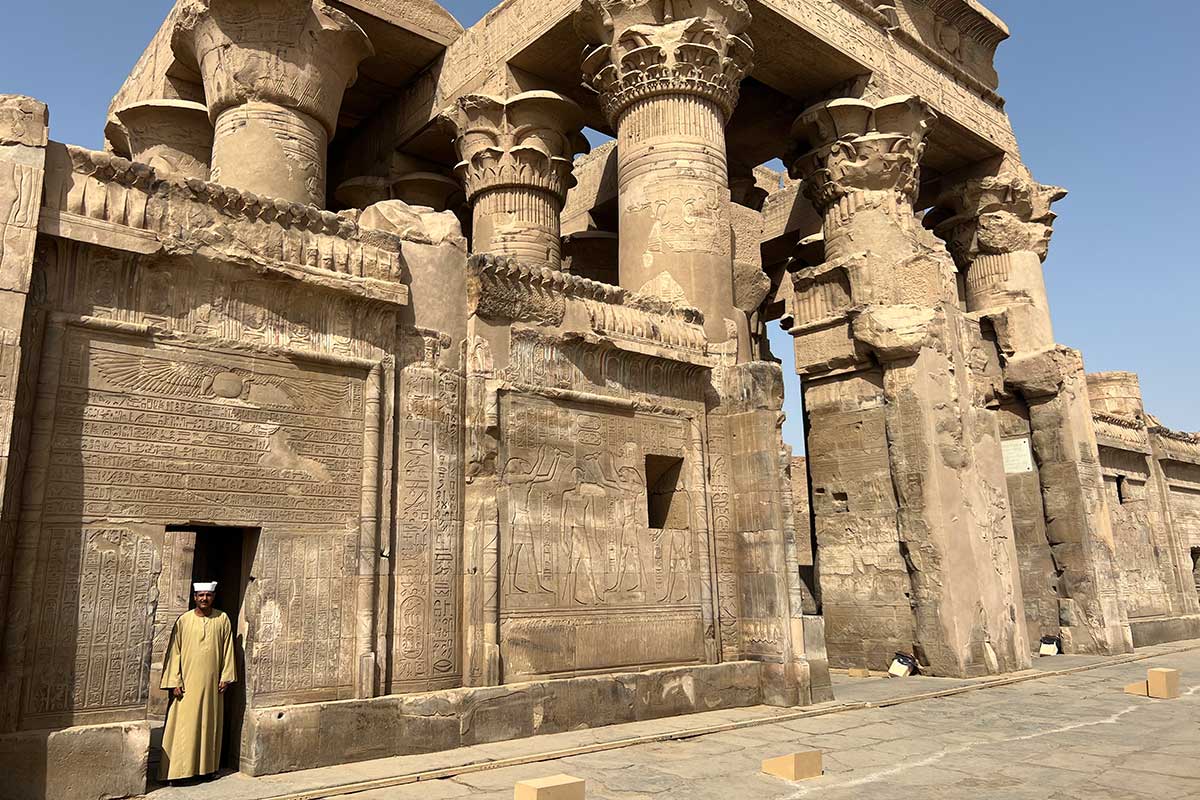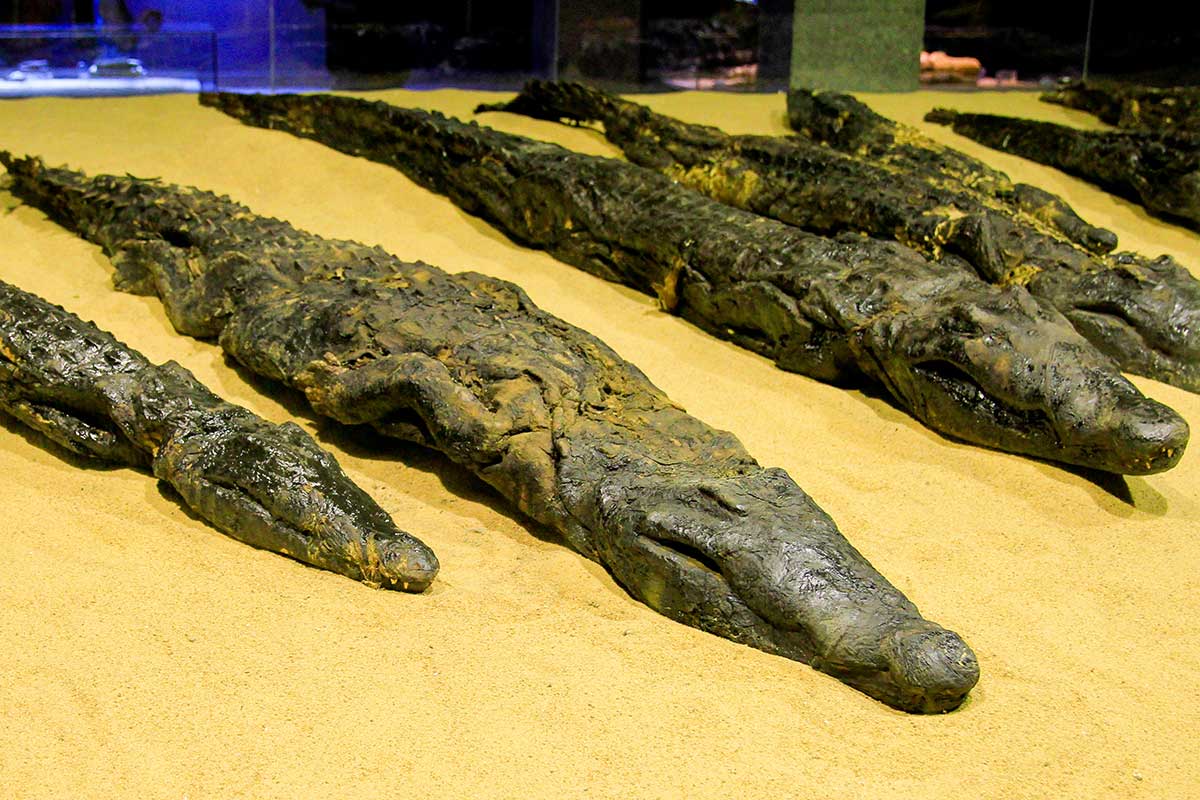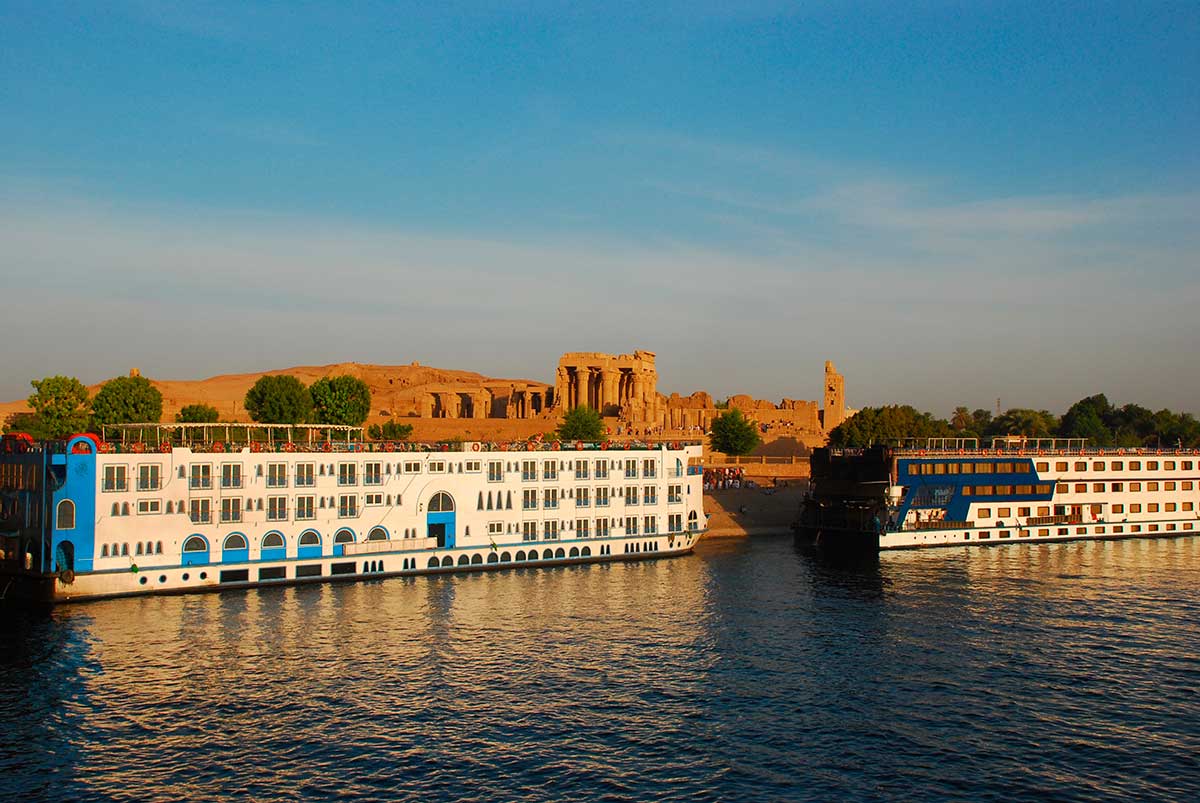Located in Upper Egypt, the temple of Kom Ombo is a must-see attraction for visitors to this region. Renowned as one of the most stunning temples in the south of the country, it’s not difficult to see why it draws crowds from all over the world. But the temple isn’t the only thing to see in this city. There are other interesting attractions to discover for those traveling on a Nile cruise or using other modes of transportation.
On this page, you’ll find all the information you need to organize your visit to Kom Ombo, whether you’re traveling independently or with the help of our agency, Egipto Exclusivo. With our extensive experience and network of highly professional suppliers. So, don’t hesitate to contact us for anything you need.
Located in the Aswan Governorate of Upper Egypt, Kom Ombo is a quaint city situated just 50 km north of Aswan and about 170 km away from Luxor.
Two activities dominate the daily life of Kom Ombo. On the one hand, agriculture, since it is located on the eastern bank of the Nile, where the plain is especially extensive. This makes the green of the crops, which extend in all directions, dominate its landscape.
However, tourism is also a significant activity in Kom Ombo, thanks to its magnificent temple, which is a frequent stop for Nile cruises. Both large motorboats and private sailing boats dock here, making it a popular destination for visitors. The city’s climate, with very hot summers and pleasant winters without precipitation, further adds to its appeal.
Kom Ombo’s population boasts a large Nubian presence. Many of these individuals settled in the city after their original villages were submerged under the waters of Lake Nasser. So, if you’re interested in learning more about their unique culture, our agency, Egipto Exclusivo, can help you explore it further.

Kom Ombo is renowned for its temple, which is a must-visit attraction when touring Upper Egypt, particularly on Nile cruises. In addition to the temple, there is another fascinating place that you can visit to enhance your tourist experience: the Crocodile Museum.
The Temple of Kom Ombo is a favored destination among travelers visiting Upper Egypt, particularly those who first catch sight of it from the Nile. The imposing construction offers a breathtaking view that’s worth capturing.
However, as visitors approach the temple of Kom Ombo, their expectations are met. The temple is well-preserved, much like other temples from the same period and region, such as Esna or Edfu. It originated in the 2nd century BC and was completed during the Roman rule, adhering to the policy of cultural and religious tolerance by foreign rulers.
Dedicated to the crocodile god, Sobek, the Temple of Kom Ombo served as the primary place of worship for this deity. Sobek was represented with a human body and a crocodile head or with a complete body of the animal and symbolized fertility, which made him highly revered throughout the region, including ancient Nubia. It’s possible that there was already another temple dedicated to this god on the site before the construction of the current temple. Additionally, the god Haroeris, also known as Horus the Elder and represented with attributes of a hawk, was also worshipped here.
The structure of the Temple of Kom Ombo had a symmetrical layout, with two halves separated by a central axis, each devoted to a specific god. However, not all spaces have been preserved, and what can be seen today is as follows:

Kom Ombo’s temple is dedicated to Sobek, the crocodile-god, and was one of the main centers of his worship. These animals were once abundant in ancient times, but now their habitat has significantly reduced only to the shores of Lake Nasser.
However, there is another much safer way to get up close and personal with the famous Nile crocodiles (Crocodylus niloticus). And that is by visiting the recently inaugurated Crocodile Museum. Previously, mummified and dissected specimens were displayed in various parts of the site, including the Hathor Chapel of the temple of Kom Ombo.
However, a new space has been created for these exhibits, which provides a better environment for them and an improved exhibition discourse. The museum is a covered, air-conditioned pavilion that can offer a pleasant respite on hot days. Visitors can see mummies, dissected specimens, sculptures, steles, and reliefs that illustrate the significance of the god Sobek in Kom Ombo. Sobek was associated with fertility and was even considered a creator god, having emerged from the primordial waters of the Nile.
Although Kom Ombo is not a very large city, it does offer several possibilities to organize your trip. Below we show you the most common ones, although at Egipto Exclusivo we adapt to your preferences.

The Temple of Kom Ombo’s success in attracting visitors is largely due to the fact that it is a mandatory stop on Nile cruises. Unlike other points on this stretch of the river, such as Gebel Silsila, all types of vessels dock here, from traditional sailboats (small feluccas and medium-sized dahabiyas) to large motor ships.
The dock where these boats dock is right in front of the Temple of Kom Ombo, so there is no need to take any other means of transportation to reach it, as is the case, for example, in Esna or Edfu.
Another common way to reach Kom Ombo is by car, especially from Aswan as a half-day or full-day excursion, as it is only about 50 km away. In Aswan, it is possible to rent a car for those who prefer to drive themselves, but a comfortable option is to hire a vehicle with a driver. This service has an optimal quality-price ratio with professional drivers and modern, comfortable models.
The same option is available from Luxor, although it is further away, about 170 km by road, taking about 3 hours. For those on vacation in the Red Sea, the Temple of Kom Ombo is a popular cultural excursion. It is just under 300 km from Marsa Alam, about 4 and a half hours of travel, and about 375 km from Berenice, taking approximately 5 hours. In Luxor and Marsa Alam, it is easy to find car rentals, and Egipto Exclusivo can provide a vehicle with a driver.
Kom Ombo has its own station on the line that runs through the entire Nile Valley, from Cairo to Aswan, making it possible to reach the temple by train. Although the overnight train is the most recommended option for tourists, it is also possible to arrive during the day on trains mainly used by Egyptians. From the station to the Temple of Kom Ombo, round trip cost is about 40 LE.
Whatever your preference for transportation, Egipto Exclusivo can organize a visit to the Temple of Kom Ombo and its adjacent museum for you, along with other additional services. Contact us!


Fill out the form below to receive a free, no-obligation, tailor-made quote from an agency specialized in Egypt.
Travel agency and DMC specializing in private and tailor-made trips to Egypt.
Mandala Tours, S.L, NIF: B51037471
License: C.I.AN-187782-3